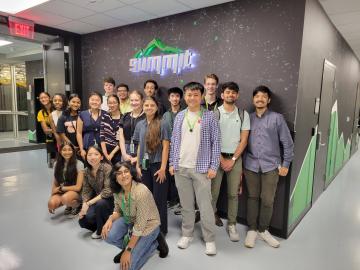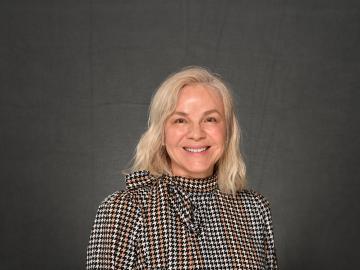Filter News
Area of Research
- (-) National Security (78)
- (-) Supercomputing (311)
- Advanced Manufacturing (34)
- Biological Systems (18)
- Biology and Environment (177)
- Biology and Soft Matter (5)
- Building Technologies (12)
- Chemical and Engineering Materials (4)
- Chemistry and Physics at Interfaces (11)
- Clean Energy (522)
- Climate and Environmental Systems (14)
- Computational Biology (6)
- Computational Chemistry (5)
- Computational Engineering (5)
- Computer Science (19)
- Data (1)
- Earth Sciences (1)
- Electricity and Smart Grid (3)
- Energy Frontier Research Centers (14)
- Energy Sciences (5)
- Fossil Energy (3)
- Fuel Cycle Science and Technology (3)
- Functional Materials for Energy (16)
- Fusion and Fission (54)
- Fusion Energy (17)
- Geographic Information Science and Technology (3)
- Isotope Development and Production (3)
- Isotopes (35)
- Materials (432)
- Materials Characterization (2)
- Materials for Computing (36)
- Materials Synthesis from Atoms to Systems (13)
- Materials Under Extremes (12)
- Mathematics (1)
- Neutron Data Analysis and Visualization (4)
- Neutron Science (190)
- Nuclear Science and Technology (74)
- Nuclear Systems Modeling, Simulation and Validation (3)
- Nuclear Systems Technology (1)
- Quantum Condensed Matter (4)
- Quantum information Science (9)
- Reactor Technology (1)
- Renewable Energy (4)
- Sensors and Controls (5)
- Transportation Systems (11)
News Type
News Topics
- 3-D Printing/Advanced Manufacturing (7)
- Advanced Reactors (2)
- Artificial Intelligence (45)
- Big Data (22)
- Bioenergy (11)
- Biology (14)
- Biomedical (17)
- Biotechnology (3)
- Buildings (4)
- Chemical Sciences (5)
- Climate Change (20)
- Computer Science (104)
- Coronavirus (16)
- Critical Materials (3)
- Cybersecurity (23)
- Decarbonization (6)
- Energy Storage (9)
- Environment (25)
- Exascale Computing (22)
- Frontier (28)
- Fusion (2)
- Grid (11)
- High-Performance Computing (40)
- Isotopes (1)
- Machine Learning (23)
- Materials (16)
- Materials Science (17)
- Mathematics (1)
- Microscopy (7)
- Molten Salt (1)
- Nanotechnology (11)
- National Security (35)
- Net Zero (1)
- Neutron Science (15)
- Nuclear Energy (8)
- Partnerships (4)
- Physics (8)
- Polymers (2)
- Quantum Computing (19)
- Quantum Science (25)
- Security (14)
- Simulation (14)
- Software (1)
- Space Exploration (3)
- Summit (42)
- Sustainable Energy (12)
- Transportation (8)
Media Contacts

Jack Orebaugh, a forensic anthropology major at the University of Tennessee, Knoxville, has a big heart for families with missing loved ones. When someone disappears in an area of dense vegetation, search and recovery efforts can be difficult, especially when a missing person’s last location is unknown. Recognizing the agony of not knowing what happened to a family or friend, Orebaugh decided to use his internship at the Department of Energy’s Oak Ridge National Laboratory to find better ways to search for lost and deceased people using cameras and drones.

A team of computational scientists at ORNL has generated and released datasets of unprecedented scale that provide the ultraviolet visible spectral properties of over 10 million organic molecules.

Research performed by a team, including scientists from ORNL and Argonne National Laboratory, has resulted in a Best Paper Award at the 19th IEEE International Conference on eScience.

This summer, ORNL welcomed more than 500 students to campus through the lab’s range of internship programs, which are offered in areas such as biology, national security and computing.

Researchers from institutions including ORNL have created a new method for statistically analyzing climate models that projects future conditions with more fidelity.

Digital twins are exactly what they sound like: virtual models of physical reality that continuously update to reflect changes in the real world.

Hilda Klasky, a research scientist in ORNL’s Computing and Computational Sciences Directorate, has been named a fellow of the American Medical Informatics Association.

ORNL is home to the world's fastest exascale supercomputer, Frontier, which was built in part to facilitate energy-efficient and scalable AI-based algorithms and simulations.

ORNL has joined a global consortium of scientists from federal laboratories, research institutes, academia and industry to address the challenges of building large-scale artificial intelligence systems and advancing trustworthy and reliable AI for

Scientists at ORNL used their knowledge of complex ecosystem processes, energy systems, human dynamics, computational science and Earth-scale modeling to inform the nation’s latest National Climate Assessment, which draws attention to vulnerabilities and resilience opportunities in every region of the country.




